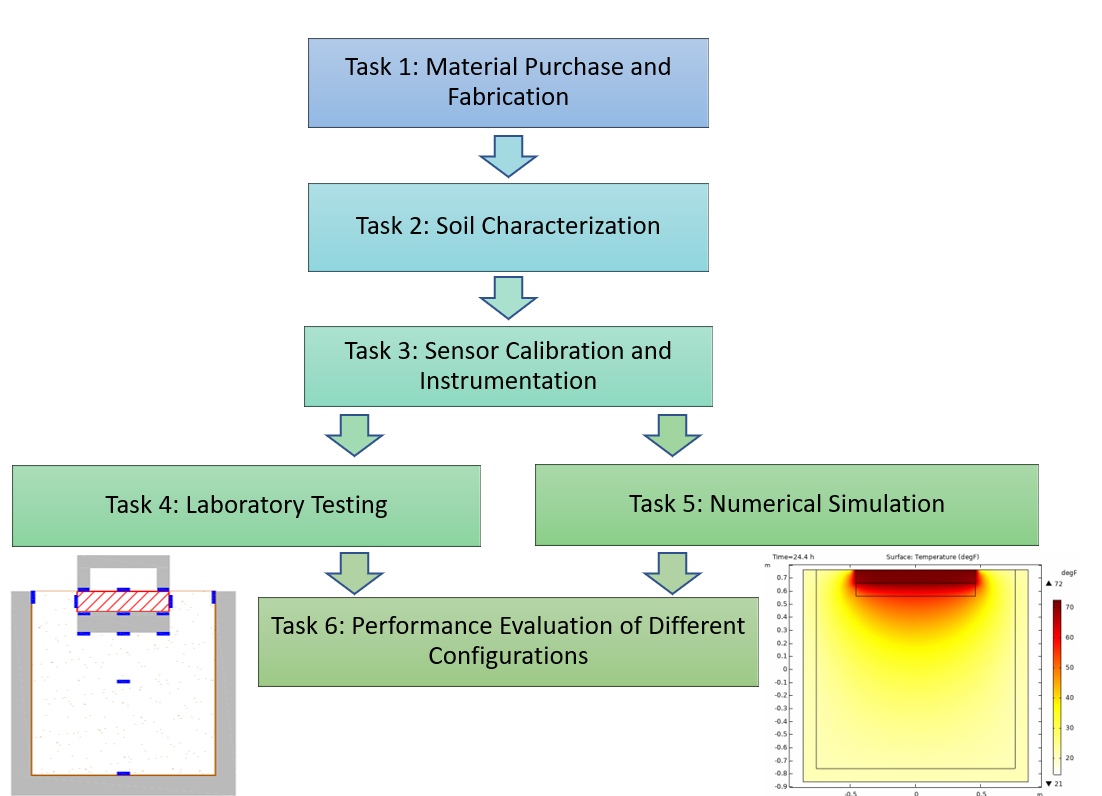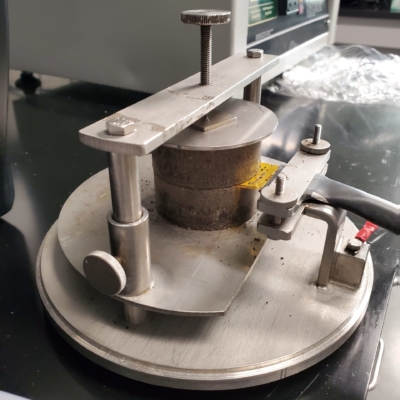Significance of Proposed Work
Almost 43% of the annual energy bill of a typical U.S. household accounts for heating and cooling expenses. As a result, the concept of net-zero homes is gaining prominence due to their efficiency and cost savings. One of the key components of this environmentally sustainable concept is to provide proper insulation. While there has been a significant amount of research conducted on conserving energy through the insulation of the superstructure of buildings, the research on insulating the foundation slabs is still in its primitive stage. This study aims to evaluate the potential of using geofoam as thermal insulation for concrete foundation slabs.
Objectives
- Perform laboratory tests to study the heat transfer through concrete slabs insulated with expanded polystyrene (EPS)
- Perform numerical simulations of the laboratory tests and use verified models for comparing different configurations
Scope of Work
- Perform laboratory tests studying heat transfer through concrete slabs insulated with different grades of expanded polystyrene (EPS) in two configurations: geofoam placed below the floor slab (GBF) and geofoam placed around the floor slab (GAF)
- Develop and verify a numerical model simulating the lab tests
- Evaluate the performance of different configurations
Research Plan
Tasks Accomplished
Task 1: Materials Purchase and Fabrication
Task 2: Soil Characterization (40 % Complete)
| USCS Classification | Lean Clay (CL) |
| Liquid Limit (LL) | 39.40% |
| Plasticity Index (PI) | 20.6% |
| Optimum Moisture Content (Modified Proctor) | 13% |
| Maximum Dry Density (Modified Proctor) | 1.87 g/cc |
| Thermal Conductivity (at OMC and 90% MDD) | 1.208 W/mK |
| Thermal Diffusivity (at OMC and 90% MDD) | 0.5294 mm²/s |
| Specific Heat (at OMC and 90% MDD) | 2.281 MJ/m³K |
Work Planned
- Perform characterization of foundation soil and calibrate sensors
- Instrument the test setup and begin testing
- Develop and validate numerical models of the tests
Impact on the State of Practice
- The study can lead to the development of design guidelines for thermal insulation of concrete slabs, thereby reducing the energy consumption of a home
- Based on the outcome of the study, thermal insulation can be used along with other energy-conserving options to promote net-zero home solutions



